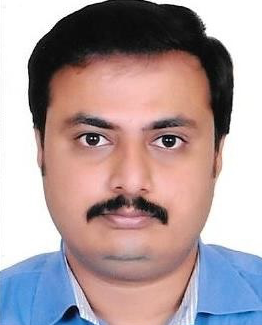Getting to know V3 Novus

Q. What is your organisation’s unique selling proposition (USP) for electronics design?
A. We have team members who have earlier worked in both semiconductor component distribution and embedded design. So our USP is to come up with a solution, keeping in mind both design and price aspects.
Q. Introduce us to your organisation.
A. We work as two major teams, one for hardware design and another for software. These are ably supported by a business development team and a sales and marketing team. Our work revolves around offering design services and creating our own products.
Q. What are the key technologies you are working on? What are your specialities?
A. We majorly work on machine-to-machine (M2M), military, railways and Internet of Things (IoT) technologies. We specialise in wireless communications like global system for mobile (GSM) communications, Wi-Fi, Zigbee and Bluetooth low-energy (BLE).
Every project should be better than current versions
Q. How do you approach a project?
A. Once we procure the requirements and specifications from customers, we try to understand what exactly they are looking at, and whether it will be possible to implement it within the constraints they have. We sometimes even have to go with just an idea or concept, and develop on it. One factor we always focus on is whether the project would have any improvements when compared to currently-available versions. Like in the case of a shoulder-level rocket-launcher simulator for Bharat Dynamics Limited (BDL), we spent a major portion of our time trying to figure out the existing electro-mechanical set-up, its functioning, and how best to replace the entire thing with a purely electronic set-up. There were also factors like adding intelligence, remote-monitoring and data analysis, to think about. Once this stage is crossed, we work at identifying the platform, power details, getting together components that work best for the design, and finally, designing the system. From the software perspective, the platform would have to be user-friendly.
Q. What are the parameters you take into account while choosing a processor for a project?
A. For low-power designs, we opt for Energy Micro’s processors. Otherwise, we generally go with Texas Instruments (TI) chips. The complexity of the project, use cases and the cost also influence our selection.
Q. For what kind of applications would you choose to go with a field-programmable gate array (FPGA), and not a microcontroller?
A. Take, for example, a vehicle-tracking device. A simple microcontroller does the job here. More peripherals and interfaces demand a processor, allowing for expansion. If the set-up works with complex algorithms, image processing or data encryption applications, we would go with an FPGA.
Q. What are the major circuit or system design projects you are currently working on?
A. We are currently working on a processor-based IoT gateway that would be at the heart of IoT applications. This is an intelligent device that will be connected with various sensor nodes in the network and with the server or the mobile app, at the other end. We are also developing very-low-power sensor nodes that can run for one or two years on a small battery. Right from the controller to the radio frequency (RF) module used, the focus is on reduced power-consumption, and the software set-up is designed to be powerful, one that can handle complex power and time issues.
The IoT is a big opportunity
Q. How do you see the IoT phenomenon? Do you see it driving business growth for India’s independent design houses (IDHs) or is it more of a marketing gimmick?
A. IoT is one big opportunity for companies like us. We find a lot of design demand in various segments like industrial automation, M2M, automotive, home automation, consumer electronics and transportation. We are excited to see experts across the globe talking big numbers. We are also working on a few IoT gateway products that will have a powerful processor with Linux or Android and various wireless interfaces like BLE, Wi-Fi, GSM, general packet radio service (GPRS) and global positioning system (GPS). The primary media for communication would be the Ethernet as it is very reliable, and there would be a central server with connected mobile devices.
Q. Tell us about some of your IoT projects.
A. We are working on projects like vehicle-tracking systems, for which we are developing a fuel sensor for monitoring fuel consumption and a controller area network (CAN) device for engine-monitoring. We also work on automated meter-reading, for which we have several utility meters, each connected to a radio frequency (RF) node. An area cluster, with about 200 to 1000 meters, would have one gateway that collects information from the meters and sends it to the cloud via GPRS. The advantage of this set-up is that the RF modules automatically collect data and send it to the cloud, and power or energy can be calculated and bills generated automatically, avoiding the need for a person to manually go from house-to-house. A pilot has been implemented in Bangladesh for 1700 meters, with 60 gateways, and the study is currently in progress.










